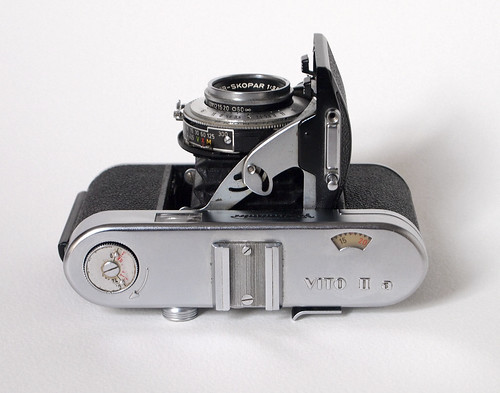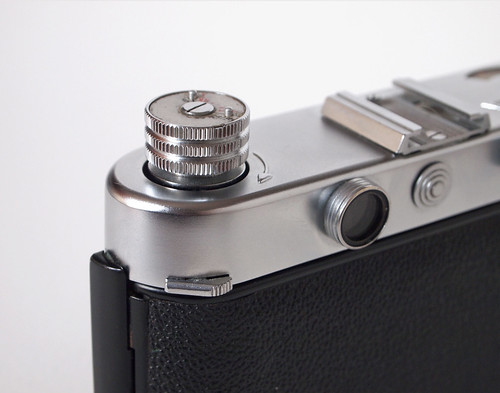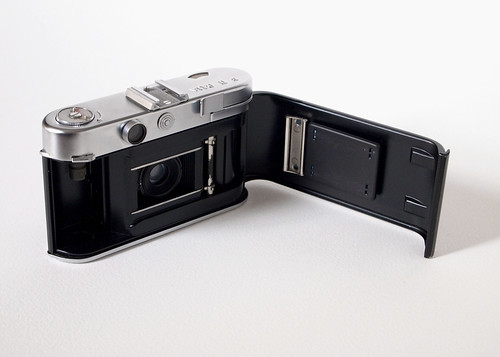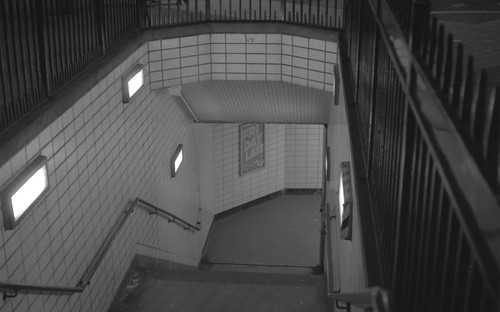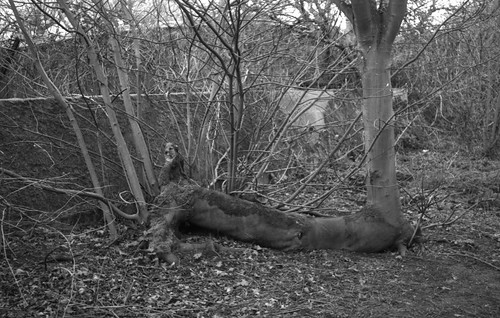 |
| MPP Micro-Technical Mark VIII with Schneider Kreuznach 150mm f4.5 lens |
In the latter half of the 20th century there weren't many UK-based camera makers of note: companies like Ensign Ross and AGI failed to capitalise on their expertise with medium format cameras and follow consumers into the 35mm market, and as a result disappeared by the start of the 1960s. One exception was
Micro Precision Products, which became MPP Photographic Products Ltd, which, as the name suggests, produced high-quality cameras aimed at the professional market. MPP were notable for the
Microcord and
Microflex TLR cameras based on the Rolleicord and Rolleiflex, and its large format cameras, the
Micro-Press, and the
Micro-Technical camera. The Micro-Technical became the mainstay of many professional photographers in the UK, as well as institutions such as the police and the armed forces in particular: the UK government ordered one S92 camera (a Micro-Technical variant) for every RAF base.
As a result of MPP's homegrown market dominance, for many students of photography in the UK, the Micro-Technical camera was
the large format field camera: it seems every university photography department had one in the 1990s and 2000s. My first experience with large format was in asssisting a friend studying in the early 2000s and using the college MPP Micro-Technical camera.
 |
| MPP Micro-Technical Mark VI with Schneider Kreuznach 150mm f4.5 lens |
I first bought a
MPP Micro-Technical Mark VI as an affordable introduction to large format photography after winning a prize for painting. Common to all the Micro-Technical cameras, it's a 4x5 triple extension folding bed camera. The design is essentially that of a
field camera, but its designation as a 'technical camera' indicates the nearly full list, albeit limited, of view camera movements ("15 degrees of everything" as I once read on a large format forum). It has a rotating spring back,
rise, cross and tilt front movements, a swing front and swing back,
and a 15 degree drop front. As a view camera, the ground glass screen is typically used for focusing, but the camera also has a rangefinder with an interchangeable cam assembly for lenses of different focal lengths: my camera came with a Schneider Kreuznach 150mm f4.5 Xenar lens, which must be original, as the lens' serial number matches that etched on the rangefinder cam. The serial number dates the lens to 1952-54, which fits neatly within the production dates of the Mark VI body, 1951-1956. There are also interchangeable focus scales on the drop bed: my camera has scales for 150mm, 135mm, and 89mm lenses. Both the rangefinder and focus scales can only be used when the camera back is flush to the body of course: with any back movements (and, ideally, any movements), the ground glass screen must be used to focus the camera.
 |
| MPP promotional leaflet showing Micro Technical Mark VIII camera movements |
Shortly after buying the Micro-Technical Mark VI, I came across an auction listing for a
Micro Technical Mark VIII body, which had a couple of fittings broken or missing, and a missing hood for the ground glass, but at just over £100, this seemed rather good value. The Mark VIII was the last of the series
of Micro Technical cameras, produced from 1963 until the company wound up in the 1980s. The camera body and lensboard were
redesigned from the Mark VII, which had retained much of the Mark VI design (the rounded corners to the body with more exposed metal make the Mark VIII design a little reminiscent of the
Kern Bijou). As well as the body, the lensboard was also redesigned: the Mark VIII board is smaller with rounded corners, meaning earlier Micro Technical lensboards are not compatible with the Mark VIII body. Improvements
from the earlier body styles are that the drop bed now has two positions, at 15 and 30
degrees and it also has an additional tripod bush on the side of the body. Both Mark VII and Mark VIII had an international standard back (some Mark VI bodies were retrofitted with an international standard back, although mine has the spring back).
 |
| Laser cut 3mm MDF for Mk VII lensboard and replacement front tilt knob |
The missing fittings were two knobs that control the front tilt, one releases the lensboard from its perpendicular position, the other secures the angle of the tilt. I replaced the missing knob that secures the tilt, but not the other (it's more complicated to fix), however rising the front sufficiently frees it for tilt movements anyway and it can be lowered it again in a tilted position. To make the replacement knob, I could simply have found a wingnut that would fit the screw thread, but for
a more elegant solution, I made the replacement with two pieces of laser cut 3mm MDF, glued to a nut with epoxy resin. I also made new lensboards for my existing lenses to use these with the Mark VIII body: the 150mm Xenar which came with the Mark VI body had a lensboard to match, and I'd subsequently bought a 90mm Angulon lens which also had a Mark VI-style board. The new lensboards were made from the same laser cut MDF, two sheets glued together with wood glue, painted with matt black acrylic, and varnished on the front only, the inside face left matt of course.
 |
| MPP Micro-Technical Mark VIII with 'homemade' lensboard |
Other than the international standard back, the additional drop bed position and tripod bush already mentioned, the main advantages of the Mark VIII body over the Mark VI are that its construction appears more solid and sturdy, exuding confidence when using the camera movements: parts seem to lock into place more securely, and the vibrations caused by actions such as inserting and changing film holders feel less likely to upset carefully positioned tilts and shifts. However, my Mark VIII body is currently awaiting further repair as the locking bolts for the drop bed are both jammed, and I have been using the Mark VI again, and it's the camera I've been using for my recent
large format posts on this blog.
 |
| Harman Direct Positive Paper, Schneider Kreuznach 150mm Xenar lens |
 |
| Adox Ortho, Schneider Kreuznach 150mm Xenar lens |
 |
| Adox Ortho, Schneider Kreuznach 90mm Angulon lens |
 |
Kodak Ektar 100, 150mm Xenar lens. Image courtesy Sarah Wishart:
taken with my Mk VIII camera, shown here to demonstrate 'tilt-shift' effects
(specifically, diverging front and rear tilts) |
Sources/further reading
The MPP Users' Club
MPP on Camera-Wiki
The MPP Micro Technical group on Flickr







